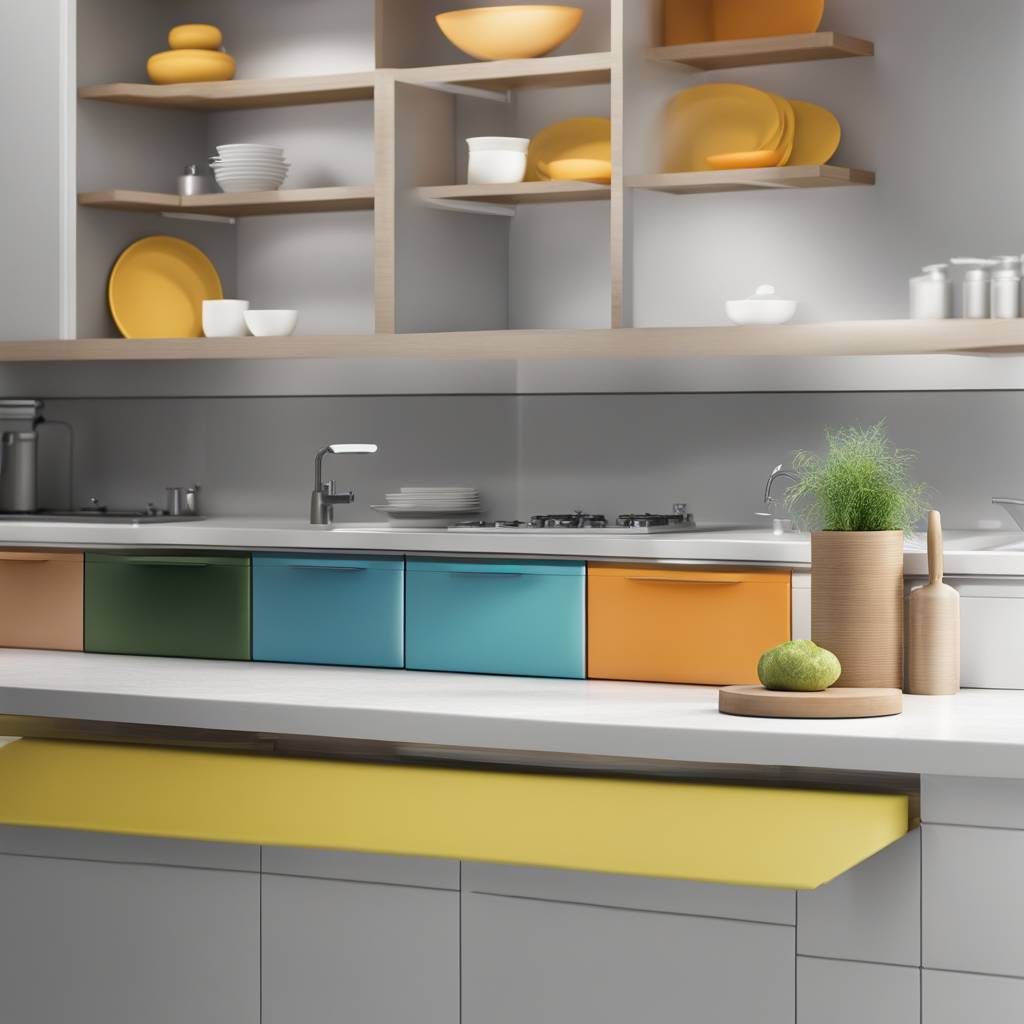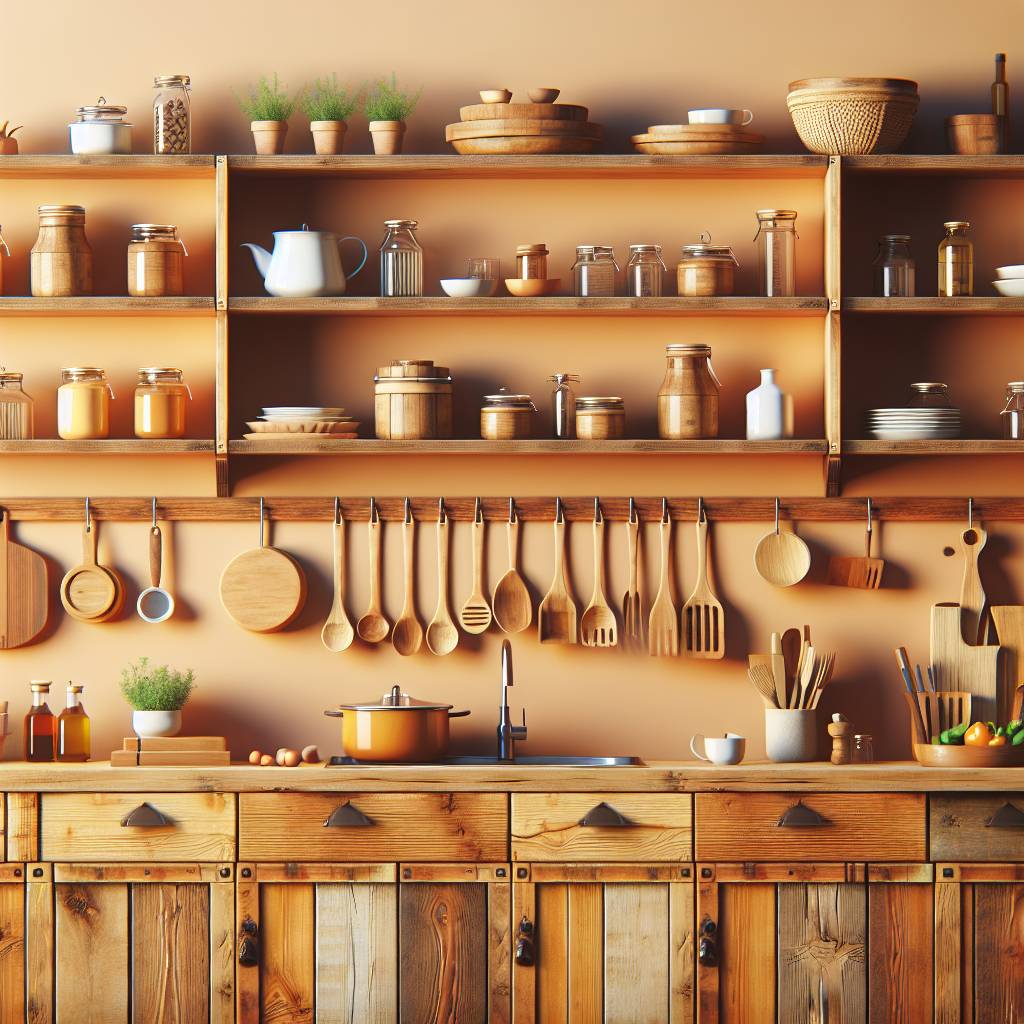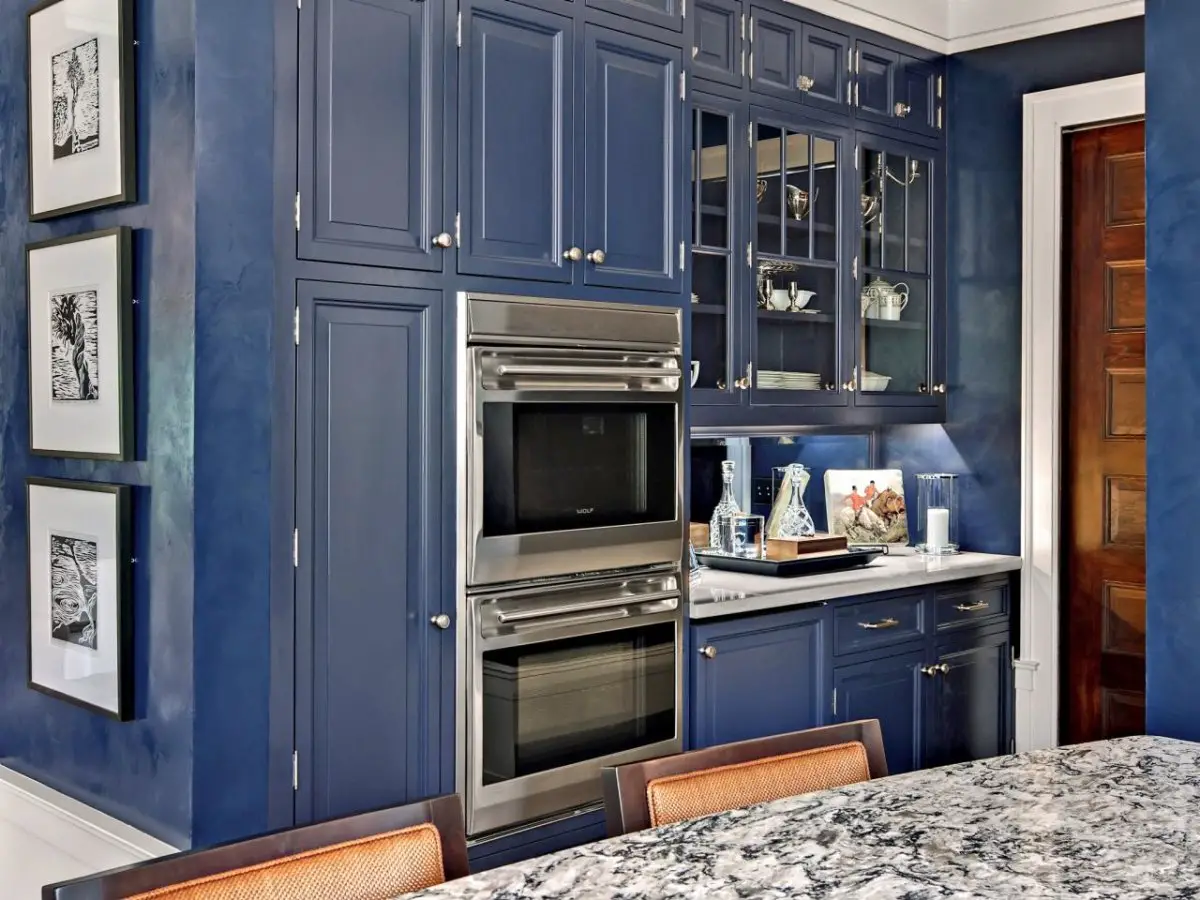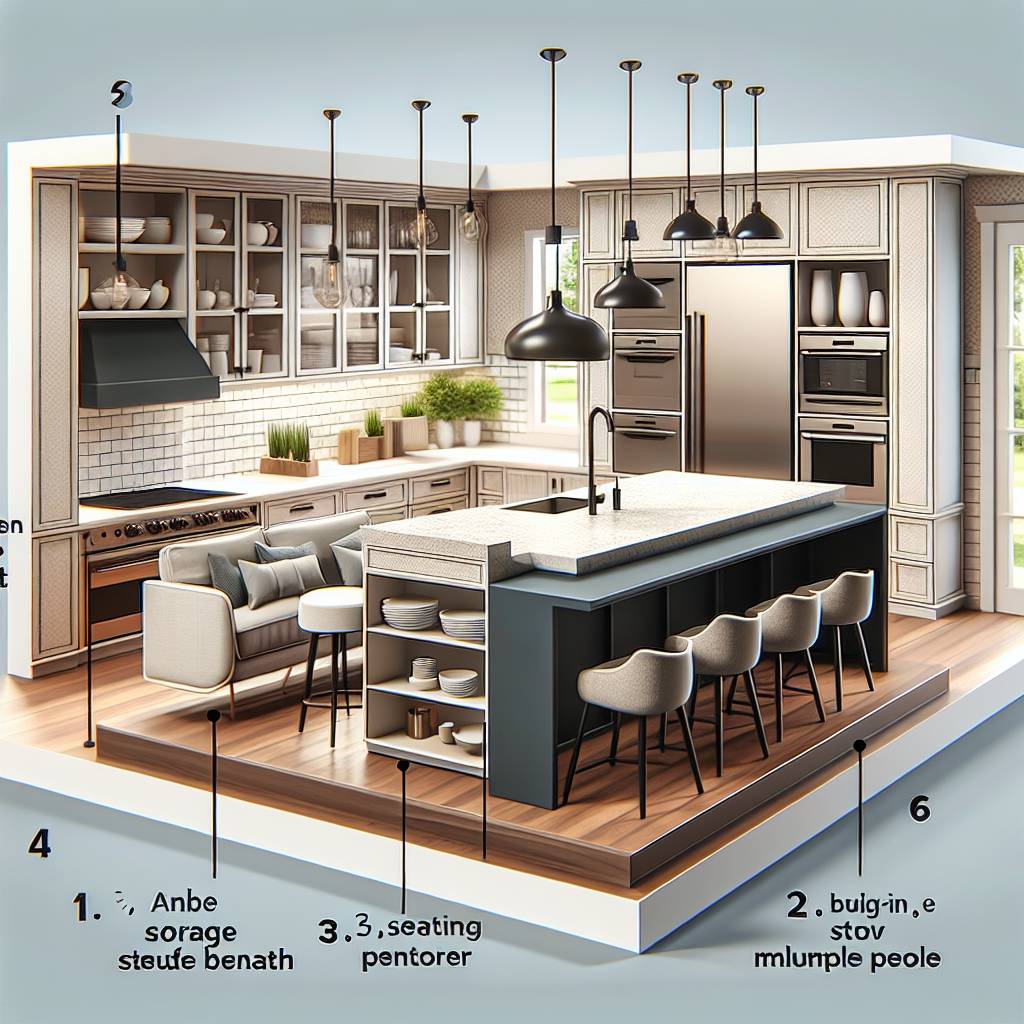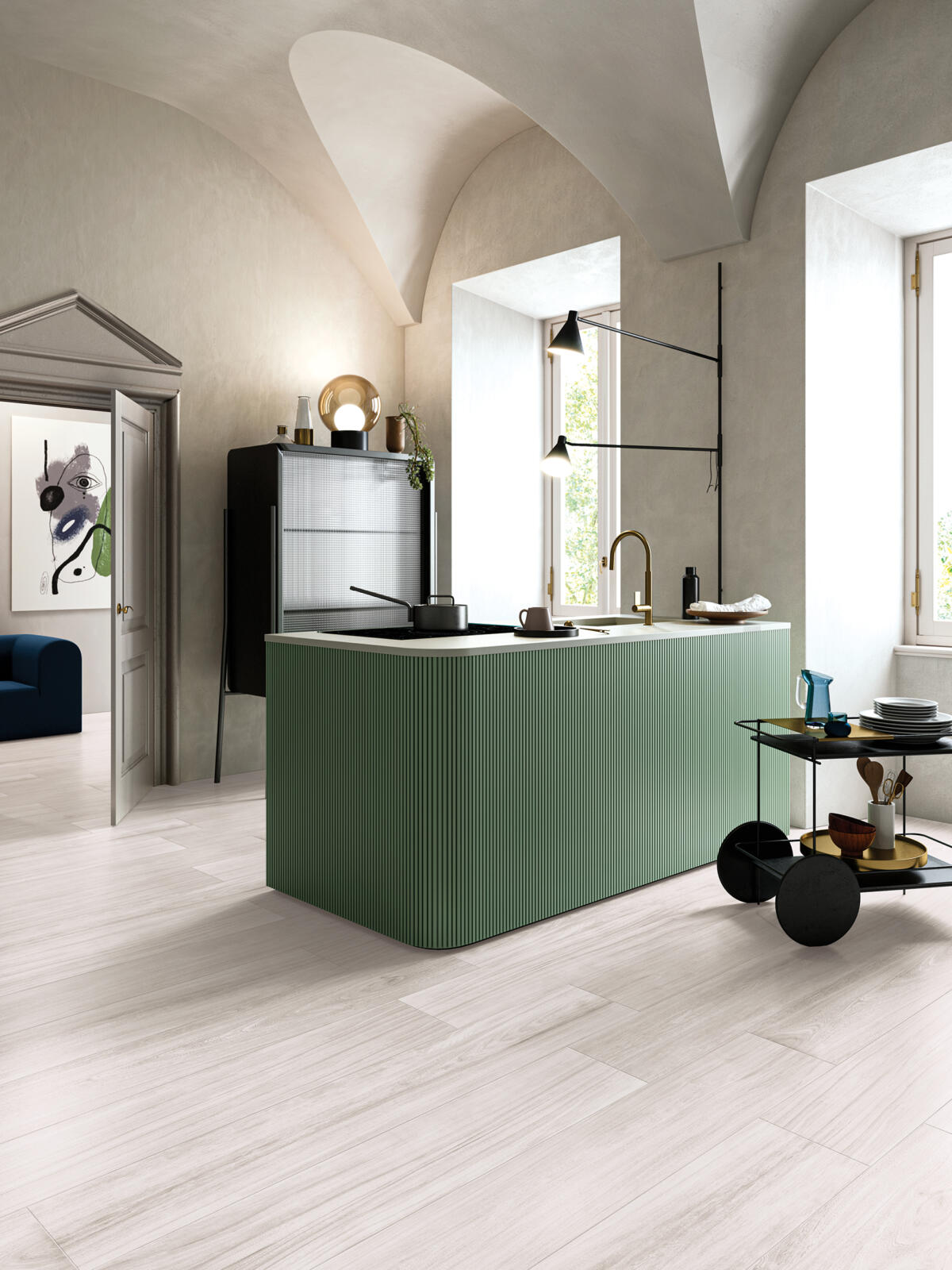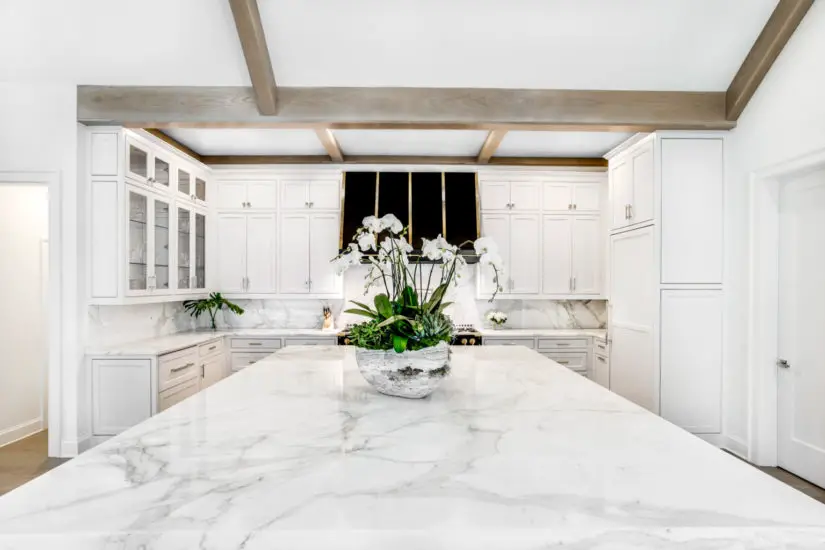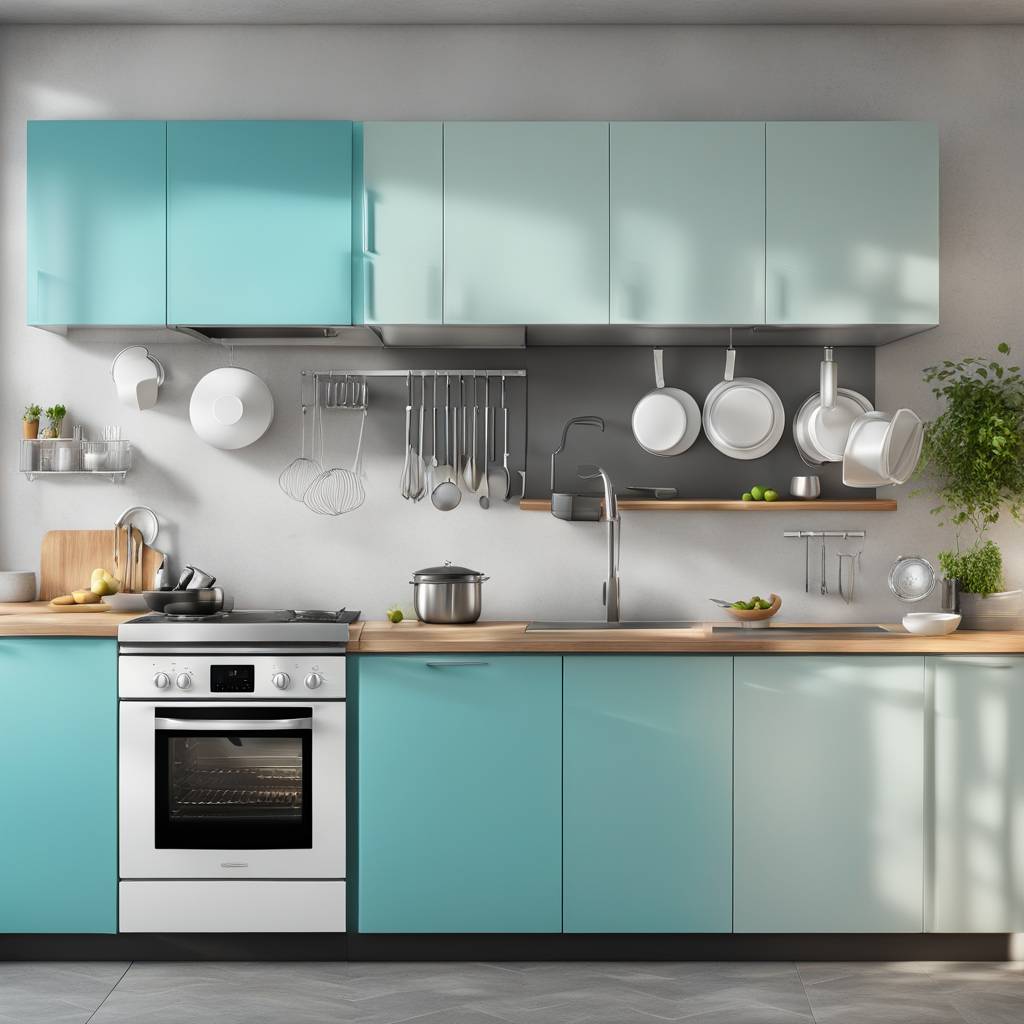In the realm of kitchen design, finding the perfect splashback material that not only enhances aesthetics but also ensures effortless cleaning is akin to striking gold. The historical journey of splashback materials has evolved from traditional tiles to modern innovations like glass, stainless steel, and acrylic. These materials not only elevate the visual appeal of your kitchen but also offer a practical solution for easy maintenance.
When choosing a suitable splashback material, it’s crucial to consider both functionality and style. With an array of options like texture and pressed metal available in the market today, selecting the right material for a modern kitchen or kitchen backsplash can be overwhelming. However, understanding the historical context and evolution of these materials can provide valuable insights into their durability and ease of cleaning.
Key Takeaways
- When choosing splashback materials, prioritize easy-to-clean options to minimize maintenance efforts.
- Consider the cost of materials alongside their cleanability to ensure a balance between affordability and practicality.
- Style and functionality should go hand in hand when selecting splashback materials, combining aesthetics with easy maintenance.
- Prioritize hygiene and maintenance by opting for non-porous and resistant materials that are easy to keep clean.
- Keep abreast of innovations in splashback materials to discover new options that offer improved cleanability and durability.
- Consider the size of the splashback area and its impact on cleanability when selecting materials, ensuring that maintenance remains manageable.
Assessing Splashback Materials
Ceramic and Porcelain
Ceramic and porcelain are popular splashback materials due to their durability. Ceramic offers a wide range of design, color, and texture options, making it versatile for various kitchen styles. On the other hand, porcelain stands out with its exceptional resistance to moisture and stains, ensuring easy maintenance over time. For instance, if you’re looking to add a pop of color or intricate patterns to your kitchen, ceramic tiles can be an excellent choice. Meanwhile, if you prioritize ease of cleaning and long-term resilience against water damage, porcelain might be the ideal option.
When considering splashback materials, keep in mind that both ceramic and porcelain are known for their ability to withstand daily wear and tear in the kitchen environment. Whether it’s accidental splashes from cooking or routine cleaning activities, these gray materials offer practicality without compromising on aesthetics.
Glass Options
Glass splashbacks present a sleek and modern aesthetic that can elevate the overall look of your kitchen space. Their reflective properties have the potential to enhance natural light within the room, creating an inviting ambiance while also making the area feel more spacious. Moreover, gray glass is incredibly easy to wipe clean—simply using a damp cloth will leave your splashback sparkling after every use.
If you’re aiming for a contemporary or minimalist design in your kitchen area, gray glass splashbacks can serve as an elegant focal point while offering effortless maintenance benefits.
Stone Varieties
Natural stone splashback materials such as granite or marble bring timeless elegance into any kitchen setting. Granite’s heat-resistant properties make it suitable for areas near stovetops where temperatures fluctuate frequently during cooking sessions. Its durable nature ensures longevity even in high-traffic spaces like busy kitchens.
On the other hand, while marble exudes luxury with its unique veining patterns and sophisticated appearance; it requires more diligent maintenance compared to other options due to its susceptibility to staining agents like acidic substances found in certain foods.
Metal Designs
Metal backsplashes contribute towards creating an industrial or contemporary vibe within kitchens due to their sleek appearance and adaptability across different interior styles. Stainless steel stands out as a hygienic option that’s exceptionally easy-to-clean—a quick wipe-down is often all that’s needed after meal preparations or spills occur.
Furthermore, copper develops a distinctive patina over time which adds character and charm but may require occasional polishing if you prefer maintaining its original luster.
Easy-to-Clean Tile Ideas
Ceramic Benefits
Ceramic tiles are a popular choice for clean backsplash ideas due to their affordability and versatility. They come in various designs, offering homeowners the flexibility to choose patterns that complement their kitchen decor. With proper glazing, ceramic tiles become resistant to heat, moisture, and stains, making them an ideal option for kitchen splashbacks. The easy maintenance routine of regular cleaning ensures that ceramic tiles retain their aesthetic appeal while providing a protective barrier against splatters and spills.
Ceramic tiles are not only visually appealing but also practical for busy kitchens. Their durability and resistance to wear and tear make them a long-lasting solution for easy-to-clean splashback materials. The cost-effectiveness of ceramic tiles makes them an attractive option for homeowners looking to enhance the functionality of their kitchen without breaking the bank.
Porcelain Properties
Porcelain tiles offer distinct advantages as splashback materials for easy cleaning due to their dense composition and low porosity compared to ceramic alternatives. This unique property makes porcelain highly resistant to water absorption, rendering it suitable for installation in areas prone to moisture exposure such as kitchens. Homeowners can benefit from larger-sized porcelain tiles that allow seamless installations with minimal grout lines, further enhancing the ease of cleaning by reducing areas where dirt or grime can accumulate.
The exceptional resilience of porcelain against water damage positions it as a reliable choice for maintaining pristine kitchen environments with minimal effort. Its ability to withstand frequent exposure to water without compromising its structural integrity ensures that homeowners can enjoy both aesthetic appeal and functional efficiency when opting for porcelain as a splashback material.
Glass Advantages
Glass tiles present an elegant solution when seeking easy-to-clean splashback materials, thanks to their non-porous nature that resists staining effectively. The reflective surface of glass adds depth and dimension to kitchens, creating visually stunning focal points while serving practical purposes in terms of cleanliness maintenance. A simple wiping routine is all it takes to keep glass splashbacks gleaming, making them an effortless option for homeowners desiring both sophistication and convenience in their kitchen spaces.
Cost and Cleanability
Budgeting for Backsplashes
Budgeting plays a crucial role. Consider the overall costs, including material expenses, installation fees, and labor charges. For instance, opting for non-tile options such as stainless steel or glass may involve higher upfront costs compared to traditional tile backsplashes. However, these materials often require less maintenance in the long run.
When considering your budget, factor in not only the initial investment but also the potential savings from reduced maintenance requirements over time. By prioritizing easy-to-clean materials during your selection process, you can minimize future upkeep expenses while ensuring a pristine kitchen environment.
Maintenance Expenses
The choice of splashback material significantly impacts ongoing maintenance expenses. Materials like stainless steel and tempered glass offer smooth surfaces that are effortless to wipe down and keep clean. On the other hand, natural stone tiles might require regular sealing to prevent staining and water damage.
By choosing low-maintenance materials with seamless surfaces or large-format slabs that reduce grout lines, you can mitigate future cleaning expenditures while enhancing both functionality and aesthetics in your kitchen space.
Matching Kitchen Styles
In addition to cost considerations and maintenance requirements, it’s essential to select a splashback material that complements your kitchen’s style seamlessly. For modern kitchens with sleek finishes and minimalist designs, matte-finish tiles or back-painted glass panels can enhance contemporary aesthetics while offering easy cleaning benefits.
For industrial-themed kitchens featuring exposed brick walls or concrete countertops, stainless steel splashbacks provide an ideal blend of rugged appeal and hassle-free maintenance due to their non-porous nature.
Cleaning Tips
Easy-to-clean splashback materials should be accompanied by simple yet effective cleaning techniques. For instance,
- Stainless steel surfaces can be easily maintained using mild detergent solutions followed by drying with a microfiber cloth.
- Glass panels benefit from regular wiping with vinegar-based solutions for streak-free cleanliness.
- Large-format porcelain slabs require minimal upkeep due to their seamless design but may need occasional gentle cleansing with soapy water.
Style and Functionality
Matching Kitchen Styles
When selecting splashback materials for easy cleaning, it’s crucial to consider how they will complement the existing kitchen style. For a traditional or rustic kitchen, classic ceramic tiles can provide a timeless look while offering practicality for cleaning. On the other hand, sleek glass or stainless steel splashbacks are ideal for modern kitchens, adding a contemporary touch while being effortless to clean. The key is to choose materials that not only enhance the overall design but also offer ease of maintenance.
In addition to considering the overall style of the kitchen, it’s essential to think about how different splashback materials can integrate with specific color schemes and patterns. For instance, if your kitchen features bold colors and intricate patterns in cabinetry or countertops, opting for a simple and understated splashback material such as white subway tiles can create balance without overwhelming the space visually. This ensures that the splashback serves as a complementary element rather than competing as another focal point in the room.
Contemporary Schemes
For kitchens with contemporary design schemes featuring minimalist lines and neutral tones, choosing seamless materials like back-painted glass can elevate the space by providing both functionality and aesthetic appeal. These types of splashbacks blend effortlessly into modern interiors while offering an easy-to-clean surface that maintains its pristine appearance with minimal effort.
Moreover, when aiming for a sleek industrial aesthetic in your kitchen space, metal finishes such as stainless steel or aluminum become excellent choices due to their durability and resistance to stains. These options not only contribute to creating an edgy look but also ensure hassle-free maintenance – making them perfect selections for homeowners seeking both form and function from their splashback materials.
Hygiene and Maintenance
Hygienic Surfaces
When choosing splashback materials for easy cleaning, it’s essential to consider their hygienic properties. Non-porous surfaces like glass, stainless steel, and acrylic are ideal for preventing the growth of bacteria and mold. These materials don’t harbor germs, making them easier to clean thoroughly. On the other hand, porous surfaces such as natural stone or unsealed tiles can trap moisture and become breeding grounds for harmful microorganisms if not properly maintained.
Some materials require regular sealing to maintain their hygienic properties. For instance, natural stone like marble or granite needs periodic sealing to prevent liquids from seeping into its surface. Without proper maintenance and special care, these materials may become susceptible to stains or bacterial growth over time.
Cleaning Tips
Proper cleaning is crucial in maintaining the hygiene of your splashback area. When using water-based cleaners on non-porous surfaces like glass or stainless steel, ensure thorough rinsing with clean water afterward to avoid leaving behind any residue that could attract dirt or grime.
For those considering installing a tile splashback made of porous material such as ceramic tiles, professional installation is recommended due to the intricacies involved in ensuring a tight fit without gaps where bacteria could proliferate.
Innovations in Splashbacks
Non-Tile Ideas
Non-tile options are gaining popularity due to their easy maintenance. Glass splashbacks, for instance, offer a sleek and modern look while being extremely easy to clean. A simple wipe with a damp cloth or some soapy water is usually all that’s needed to keep them looking pristine. They create an illusion of space and reflect light, making the kitchen appear brighter.
Another non-tile option is acrylic splashbacks. These are lightweight, durable, and come in a wide range of colors and designs. They are also seamless and have no grout lines like traditional tiles do, making cleaning effortless as there are no crevices for dirt or grease to accumulate.
In addition to these options, stainless steel has emerged as a popular choice for those seeking an industrial or contemporary aesthetic in their kitchens. Stainless steel splashbacks not only provide a hygienic surface but also require minimal effort.
Slab Features
Slab features refer to using large panels of material such as marble or granite for your splashback instead of smaller tiles. This creates a smooth and uninterrupted surface that not only looks elegant but is also incredibly easy to maintain.
Marble slab splashbacks, though luxurious in appearance, can be surprisingly low-maintenance if properly sealed upon installation. The smooth surface makes it simple to wipe away any spills or splatters without worrying about grout lines trapping dirt over time.
Granite slab splashbacks offer similar benefits; they’re resistant to heat and scratches while being exceptionally easy to clean due to the lack of seams where food residue could accumulate.
By considering these non-tile ideas like glass, acrylics, stainless steel along with slab features such as marble and granite you can achieve both aesthetic appeal and practicality when selecting your kitchen backsplash.
Size and Cleanability Impact
Tile Dimensions
The size of the tiles can significantly impact their cleanability. Larger tiles mean fewer grout lines, which reduces the areas where dirt and grime can accumulate. This makes cleaning more manageable as there are fewer spaces for food splatters or grease to settle into.
For instance, large-format tiles measuring 12×24 inches or even bigger have become increasingly popular due to their sleek appearance and minimal grout lines. These larger tiles not only create a seamless look but also make wiping down the surface a breeze. With less grout to scrub, maintaining cleanliness becomes much simpler.
On the other hand, smaller mosaic tiles with intricate patterns may look visually appealing but can pose challenges. The numerous grout lines between these small tiles provide ample opportunities for stains and residue to build up, requiring more effort during cleaning.
Alternatives to Traditional Tiles
Matte surfaces are a popular choice. Unlike glossy finishes, matte surfaces don’t show water spots or fingerprints as prominently. This makes them ideal for areas prone to splashes and stains, such as the kitchen.
Matte surfaces also have a more forgiving nature. They tend to mask streaks and smudges better than their glossy counterparts. For instance, if you accidentally leave some soap residue while wiping down a matte surface, it’s less likely to be noticeable compared to a shiny one.
matte surfaces can provide an elegant and contemporary look that complements various interior styles. From modern minimalist kitchens to rustic farmhouse designs, these surfaces offer versatility in both aesthetic appeal and functionality.
Exploring eclectic choices beyond traditional tiles opens up a world of possibilities for splashback materials. Glass panels are gaining popularity due to their sleek appearance and ease of maintenance. A single sheet of glass eliminates grout lines where dirt and grime can accumulate over time.
Stainless steel is another practical option known for its durability and resistance against heat and moisture—ideal qualities for kitchen environments. It’s easy to clean with just soap and water while offering a sleek industrial look that suits contemporary settings.
Moreover, acrylic sheets present an affordable alternative with similar benefits like easy cleaning and maintenance. These sheets come in various colors and patterns, allowing homeowners the freedom to express their creativity through vibrant splashback designs.
- Glass panels
- Stainless steel
- Acrylic sheets
Transformative Design Ideas
Modern Transformations
Modern transformations offer a wide range of options that combine both functionality and style. One popular choice is tempered glass, which not only provides a sleek and contemporary look but also offers effortless maintenance. The smooth surface makes it easy to wipe away any splatters or stains, ensuring a clean and hygienic kitchen environment. Glass splashbacks come in a variety of colors, allowing homeowners to add a pop of personality to their space while still enjoying the benefits of easy cleaning.
Another modern transformation option is stainless steel. This material is highly durable and resistant to heat and moisture, making it an ideal choice for busy kitchens. Its non-porous surface prevents the buildup of grime and grease, simplifying the cleaning process. Stainless steel splashbacks are also available in different finishes, from brushed to polished, offering versatility in design. With its ability to seamlessly blend into various kitchen styles while providing hassle-free maintenance, stainless steel has become a sought-after material for contemporary homes.
Color and Texture
Incorporating color and texture into splashback materials for easy cleaning can elevate the overall aesthetic appeal of the kitchen while ensuring effortless upkeep. For those seeking vibrant hues or unique patterns, acrylic splashbacks present an attractive solution. These customizable panels allow homeowners to infuse their personal style into the kitchen space without compromising on cleanliness. Moreover, acrylic surfaces are smooth and non-absorbent, making them simple to clean with just soap and water.
Furthermore, porcelain tiles offer an array of color options along with diverse textures such as matte or glossy finishes. Their low porosity makes them resistant to staining—a valuable feature for maintaining cleanliness in high-traffic areas like kitchens—while their varied designs enable individuals to achieve specific visual effects that complement their interior decor.
To sum up:
- Tempered glass: Sleek appearance; Easy maintenance; Variety of colors.
- Stainless steel: Durable; Resistant; Versatile finishes.
- Acrylic: Customizable; Smooth surface; Non-absorbent.
- Porcelain tiles: Color variety; Diverse textures; Low porosity.
Summary
You’ve learned about the various materials for splashbacks and their impact on easy cleaning. From assessing different materials to exploring innovative design ideas, it’s clear that the right choice can significantly impact the cleanliness and maintenance of your kitchen or bathroom. Consider the cost, style, size, and hygiene implications when selecting a splashback material to ensure it aligns with your needs for both functionality and easy cleaning.
Now armed with this knowledge, it’s time to take action. Evaluate your current splashback situation and weigh the factors discussed to make an informed decision. Whether you opt for easy-to-clean tile ideas or consider alternatives to traditional tiles, remember that the right choice can transform not only the aesthetics but also the practicality of your space. Make a splash with a stylish yet functional splashback that’s a breeze to maintain!
Frequently Asked Questions
What are the best materials for easy-to-clean splashbacks?
Glass and stainless steel splashbacks are top choices. They offer smooth surfaces that can be quickly wiped down, making maintenance a breeze.
How do I assess the cleanability of different splashback materials?
To evaluate the cleanability of various materials, consider factors like porosity, texture, and grout lines. Smooth non-porous surfaces such as glass or stainless steel are generally easier to clean compared to porous materials like natural stone.
Are there cost-effective tile options that are also easy to clean?
Yes, porcelain and ceramic tiles are budget-friendly options known for their ease of maintenance. Their smooth surfaces make them simple to wipe down without requiring special cleaners or extensive scrubbing.
Can style and functionality coexist in splashback design?
Absolutely! You can achieve both style and functionality by choosing sleek, modern designs in durable materials like tempered glass or engineered quartz. These not only look stunning but also offer hassle-free cleaning.
What innovative splashback options combine aesthetics with cleanliness?
Innovations like large-format porcelain panels provide a seamless look with minimal grout lines, reducing areas where dirt can accumulate. Back-painted glass offers a stylish yet easily maintainable option for contemporary kitchens.
